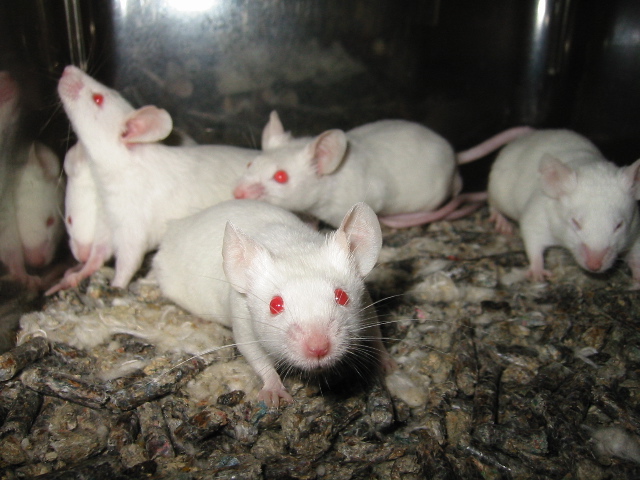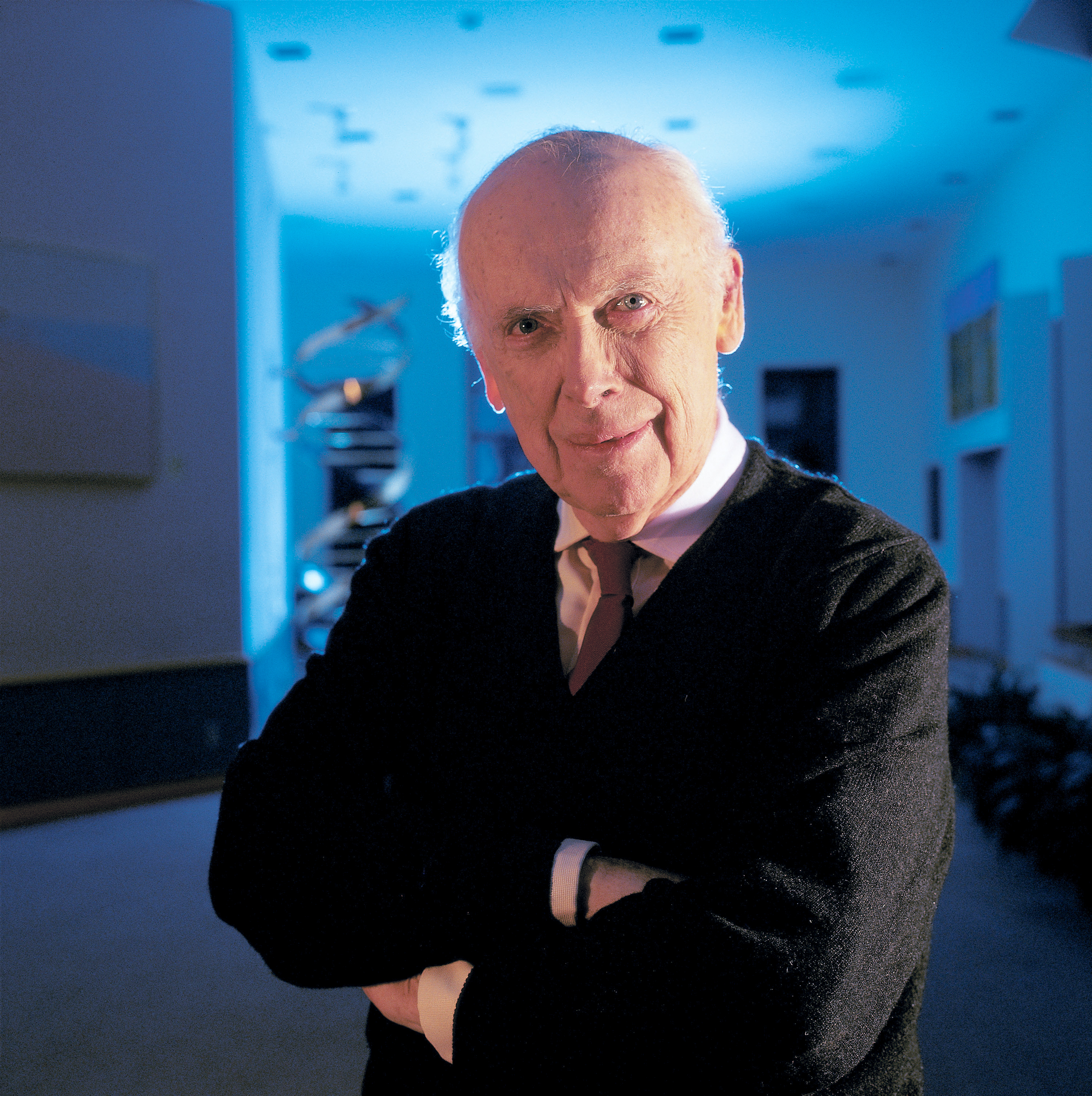|
Ada Hamosh
Ada Hamosh (born 1960) is an American pediatrician and geneticist. She is the Frank V. Sutland Professor of Genetics in the Departments of Genetic Medicine and Pediatrics at the Johns Hopkins University. She is a physician-scientist known for resources she created for researchers and clinicians globally. Early life and education Hamosh was born in Jerusalem in 1960 to a biochemist mother and pulmonologist father. She grew up in Bethesda, Maryland with a mailbox that said 'Paul Hamosh, MD, Margit Hamosh, PhD, and Ada Hamosh, KID.' After college at Wesleyan and medical school at Georgetown, she chose Johns Hopkins for pediatrics residency, Hamosh completed the Residency in Pediatrics at Hopkins along with her Genetics fellowship. Career Hamosh assumed the position of scientific director of Online Mendelian Inheritance in Man (OMIM®). She served as co-chair of the phenotype review committee of the Baylor- Hopkins Centers for Mendelian Genomics (CMG), a National Human Geno ... [...More Info...] [...Related Items...] OR: [Wikipedia] [Google] [Baidu] |
Johns Hopkins School Of Medicine
The Johns Hopkins University School of Medicine (JHUSOM) is the medical school of Johns Hopkins University, a private research university in Baltimore, Maryland. Established in 1893 following the construction of the Johns Hopkins Hospital, the school is known for being a center of biomedical research and innovation, and is routinely ranked as one of the top medical schools in the United States. The School of Medicine is located in Baltimore, Maryland, where it shares a campus in East Baltimore with the School of Nursing, Bloomberg School of Public Health, and Johns Hopkins Hospital, the school's primary teaching hospital. As part of the larger Johns Hopkins Medicine health system, the school is also affiliated with numerous regional hospitals and medical centers including the Johns Hopkins Bayview Medical Center, Johns Hopkins Howard County Medical Center, Suburban Hospital in Montgomery County, Sibley Memorial Hospital in Washington, D.C. History Before his death in ... [...More Info...] [...Related Items...] OR: [Wikipedia] [Google] [Baidu] |
Model Organism
A model organism is a non-human species that is extensively studied to understand particular biological phenomena, with the expectation that discoveries made in the model organism will provide insight into the workings of other organisms. Model organisms are widely used to research human disease when human experimentation would be unfeasible or unethical. This strategy is made possible by the common descent of all living organisms, and the conservation of metabolic and developmental pathways and genetic material over the course of evolution. Research using animal models has been central to most of the achievements of modern medicine. It has contributed most of the basic knowledge in fields such as human physiology and biochemistry, and has played significant roles in fields such as neuroscience and infectious disease. The results have included the near- eradication of polio and the development of organ transplantation, and have benefited both humans and animals. From 19 ... [...More Info...] [...Related Items...] OR: [Wikipedia] [Google] [Baidu] |
1960 Births
It is also known as the " Year of Africa" because of major events—particularly the independence of seventeen African nations—that focused global attention on the continent and intensified feelings of Pan-Africanism. Events January * January 1 – Cameroon becomes independent from France. * January 9– 11 – Aswan Dam construction begins in Egypt. * January 10 – British Prime Minister Harold Macmillan makes the "Wind of Change" speech for the first time, to little publicity, in Accra, Gold Coast (modern-day Ghana). * January 19 – A revised version of the Treaty of Mutual Cooperation and Security between the United States and Japan ("U.S.-Japan Security Treaty" or "''Anpo (jōyaku)''"), which allows U.S. troops to be based on Japanese soil, is signed in Washington, D.C. by Prime Minister Nobusuke Kishi and President Dwight D. Eisenhower. The new treaty is opposed by the massive Anpo protests in Japan. * January 21 ** Coalbrook mining disaster: A coal mine ... [...More Info...] [...Related Items...] OR: [Wikipedia] [Google] [Baidu] |
Women Physicians
The presence of women in medicine, particularly in the practicing fields of surgery and as physicians, has been traced to the earliest of history. Women have historically had lower participation levels in medical fields compared to men with occupancy rates varying by race, socioeconomic status, and geography. Women's informal practice of medicine in roles such as caregivers, or as allied health professions, allied health professionals, has been widespread. Since the start of the 20th century, most countries of the world provide women with access to medical education. Not all countries ensure equal employment equal opportunity, opportunities, and gender equality has yet to be achieved within medical Specialty (medicine), specialties and around the world. History Ancient medicine The involvement of women in the field of medicine has been recorded in several early civilizations. An ancient Egypt, Egyptian of the Old Kingdom of Egypt, Peseshet, described in an inscription as "lady ... [...More Info...] [...Related Items...] OR: [Wikipedia] [Google] [Baidu] |
Physician-scientists
A physician-scientist (in North American English) or clinician-scientist (in British English and Australian English) is a physician who divides their professional time between direct clinical practice with patients and scientific research. Physician-scientists traditionally hold both a medical degree and a Doctor of Philosophy, also known as an MD-PhD or DO-PhD. Compared to other clinicians, physician-scientists invest significant time and professional effort in scientific research, with ratios of research to clinical time ranging from 50/50 to 80/20. Physician-scientists are often employed by academic or research institutions where they drive innovation across a wide range of medical specialties and may also use their extensive training to focus their clinical practices on specialized patient populations, such as those with rare genetic diseases or cancers. Although they are a minority of both practicing physicians and active research scientists, physician-scientists are often cit ... [...More Info...] [...Related Items...] OR: [Wikipedia] [Google] [Baidu] |
American College Of Medical Genetics And Genomics
The American College of Medical Genetics and Genomics (ACMG) is an organization composed of biochemical, clinical, cytogenetic, medical and molecular geneticists, genetic counselors and other health care professionals committed to the practice of medical genetics. History The ACMG, incorporated in 1991, stated mission to give national representation to providers of genetic services and their patients with genetic disorders; to provide education and resources for the medical genetics profession; to improve the health of the public by promoting the development and implementation of methods to diagnose, treat and prevent genetic disease. In 1993, ACMG publishes the first edition of the ''ACMG Standards and Guidelines for Clinical Genetic Laboratories'' and supports the formation of the American Board of Genetic Counseling. The first ''Annual Clinical Genetic Meeting'' is held in 1994. Next year, the College becomes a full member of the Council of Medical Specialty Societies. A ... [...More Info...] [...Related Items...] OR: [Wikipedia] [Google] [Baidu] |
David Rimoin
David Lawrence Rimoin (November 9, 1936 – May 27, 2012) was a Canadian American geneticist. He was especially noted for his research into the genetics of skeletal dysplasia (dwarfism), inheritable diseases such as Tay–Sachs disease, and diabetes.Thomas H. Maugh, II"Dr. David L. Rimoin dies at 75; Cedars-Sinai geneticist" ''Los Angeles Times'', May 30, 2012. Biography Rimoin was born in Montreal, the son of Fay (Lecker) and Michael Rimoin. Rimoin attended college and medical school at McGill University, where he received his bachelor's degree in 1957, followed by a medical degree and a Master of Science in genetics in 1961. He followed with internships and residencies at Royal Victoria Hospital in Montreal and at Johns Hopkins Hospital in Baltimore, where he studied under genetics pioneer Victor A. McKusickBetty M. Adelson, ''Dwarfism: Medical And Psychosocial Aspects Of Profound Short Stature'' (JHU Press, 2005), , pp. 51-52Excerpts availableat Google Books. and received a ... [...More Info...] [...Related Items...] OR: [Wikipedia] [Google] [Baidu] |
Human Genome Organisation
The Human Genome Organisation (HUGO) is a non-profit organization founded in 1988. HUGO represents an international coordinating scientific body in response to initiatives such as the Human Genome Project. HUGO has four active committees, including the HUGO Gene Nomenclature Committee (HGNC), and the HUGO Committee on Ethics, Law and Society (CELS). History HUGO was established at the first meeting on genome mapping and sequencing at Cold Spring Harbor in 1988. The idea of starting the organization stemmed from South African biologist Sydney Brenner, who is best known for his significant contributions to work on the genetic code and other areas of molecular biology, as well as winning the 2002 Nobel Prize in Physiology or Medicine. A Founding Council was elected at the meeting with a total of 42 scientists from 17 different countries, with Victor A. McKusick serving as founding President. In 2016, HUGO was located at the EWHA Womans University in Seoul, South Korea. In 2020, the ... [...More Info...] [...Related Items...] OR: [Wikipedia] [Google] [Baidu] |
Human Variome Project
The Human Variome Project (HVP) is the global initiative to collect and curate all human genetic variation affecting human health. Its mission is to improve health outcomes by facilitating the unification of data on human genetic variation and its impact on human health. Inception The HVP concept was conceived by Richard Cotton, a leader in the field of human genetic variation. His group, the Genomic Disorders Research Centre, based at the University of Melbourne and St. Vincent's Hospital, has established a consortium that covers genomic variation and its health implications in a comprehensive form. This consortium has encouraged the creation and supported many of the 571 gene specific variation databases currently available on the internet. However, these databases are of varying completeness and individualistic, so the Human Variome Project was born to establish a central project to encourage the collection and sourcing of this data, verifying it and ultimately using it for ... [...More Info...] [...Related Items...] OR: [Wikipedia] [Google] [Baidu] |
Variant Of Uncertain Significance
A variant of uncertain (or unknown) significance (VUS) is a genetic variant that has been identified through genetic testing but whose significance to the function or health of an organism is not known. Two related terms are "gene of uncertain significance" (GUS), which refers to a gene that has been identified through genome sequencing but whose connection to a human disease has not been established, and "insignificant mutation", referring to a gene variant that has no impact on the health or function of an organism. The term "variant' is favored in clinical practice over "mutation" because it can be used to describe an allele more precisely (i.e. without inherently connoting pathogenicity). When the variant has no impact on health, it is called a "benign variant". When it is associated with a disease, it is called a "pathogenic variant". A "pharmacogenomic variant" has an effect only when an individual takes a particular drug and therefore is neither benign nor pathogenic. A VUS ... [...More Info...] [...Related Items...] OR: [Wikipedia] [Google] [Baidu] |
National Human Genome Research Institute
The National Human Genome Research Institute (NHGRI) is an institute of the National Institutes of Health, located in Bethesda, Maryland. NHGRI began as the Office of Human Genome Research in The Office of the Director in 1988. This Office transitioned to the National Center for Human Genome Research (NCHGR), in 1989 to carry out the role of the NIH in the International Human Genome Project (HGP). The HGP was developed in collaboration with the United States Department of Energy (DOE) and began in 1990 to sequence the human genome. In 1993, NCHGR expanded its role on the NIH campus by establishing the Division of Intramural Research (DIR) to apply genome technologies to the study of specific diseases. In 1996, the Center for Inherited Disease Research (CIDR) was also established (co-funded by eight NIH institutes and centers) to study the genetic components of complex disorders. In 1997 the United States Department of Health and Human Services (DHHS) renamed NCHGR the National Hum ... [...More Info...] [...Related Items...] OR: [Wikipedia] [Google] [Baidu] |
Physician-scientist
A physician-scientist (in North American English) or clinician-scientist (in British English and Australian English) is a physician who divides their professional time between direct clinical practice with patients and scientific research. Physician-scientists traditionally hold both a medical degree and a Doctor of Philosophy A Doctor of Philosophy (PhD, DPhil; or ) is a terminal degree that usually denotes the highest level of academic achievement in a given discipline and is awarded following a course of Postgraduate education, graduate study and original resear ..., also known as an MD–PhD, MD-PhD or DO-PhD. Compared to other clinicians, physician-scientists invest significant time and professional effort in scientific research, with ratios of research to clinical time ranging from 50/50 to 80/20. Physician-scientists are often employed by academic or research institutions where they drive innovation across a wide range of medical specialties and may also use their exte ... [...More Info...] [...Related Items...] OR: [Wikipedia] [Google] [Baidu] |





